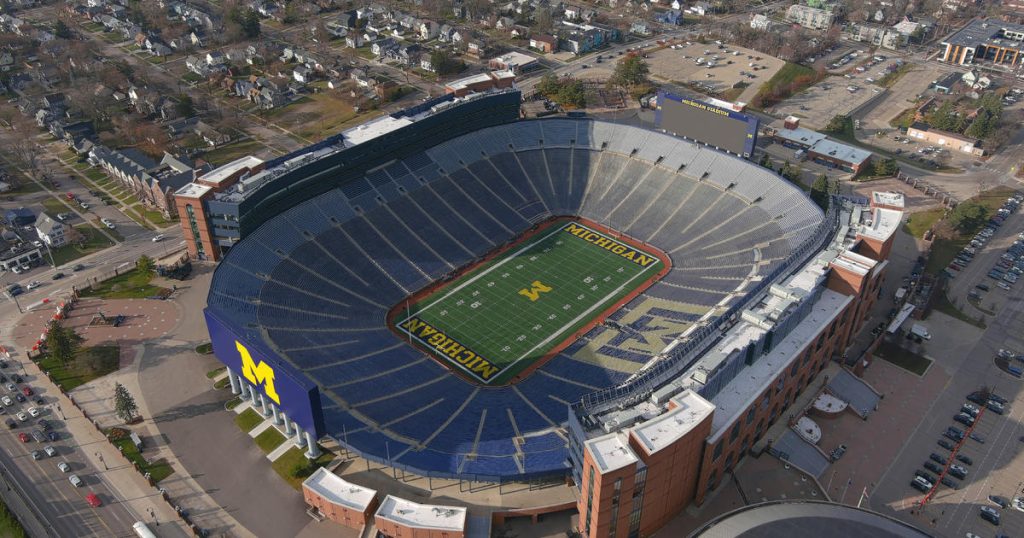Spectators at the University of Michigan football game against Texas on Saturday will be greeted by an aerial banner paid for by the Democratic National Committee that reads: “JD Vance.” This gesture is meant to remind battleground state voters, particularly younger fans, of the upcoming election, as similar banners will fly over three other college football games in battleground states. The DNC’s Project 2025 is highlighted in these banners, encouraging fans to stay engaged politically and reminding them of the importance of the upcoming election in November.
President Trump and his campaign have tried to distance themselves from Project 2025, despite similarities between its proposals and Trump’s past and proposed campaign promises. JD Vance, who is highlighted in one of the banners, has also referenced the Michigan-Ohio State rivalry during his own campaign stops. Other political groups, such as NextGen America, are also using college sports as a platform to engage young voters. This organization is paying student-athletes in battleground states to encourage others to vote, utilizing the “Name, Image, and Likeness” (NIL) ruling that allows athletes to monetize their personal brand.
The battle over the young vote is crucial for Vice President Kamala Harris’ campaign, as sustaining the support President Biden received from college-aged voters in 2020 is key. Despite Biden easily garnering more support from younger voters in the last election, the voter turnout for this demographic is significantly lower compared to older voters. Both candidates have backing from college outreach programs, with Trump being supported by Turning Point USA and Harris launching a “Back-to-School” campaign targeting college campuses in battleground states.
In an effort to reach younger audiences, both candidates have engaged with social media influencers and content creators. The Democratic National Convention credentialed over 200 influencers this cycle, while Trump has appeared on podcasts and streaming shows geared toward a younger audience. However, Trump’s appearances on certain platforms have been criticized due to the backgrounds of some of the hosts. The engagement with influencers and content creators is part of a larger strategy to connect with young voters, who have historically turned out to vote at lower rates compared to older demographics.
The Harris campaign, in particular, has ramped up efforts to engage with young voters, including running ads during college football games and doubling staff dedicated to youth engagement. While likely voters under 30 years old heavily lean towards Harris, there is still a need to motivate this demographic to turn out and vote. Both candidates are making a concerted effort to appeal to younger voters through outreach programs, campus visits, and social media campaigns. The outcome of the election may be influenced by the level of engagement and voter turnout among this critical demographic.


